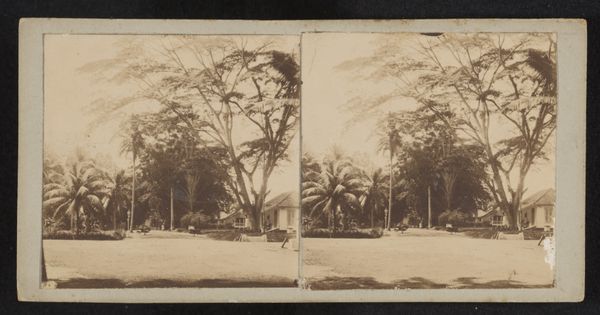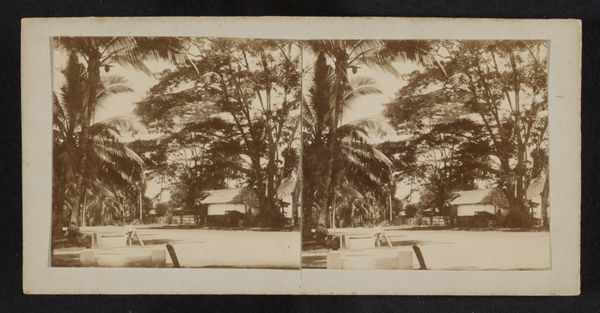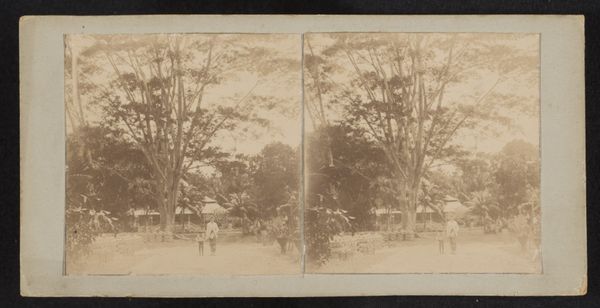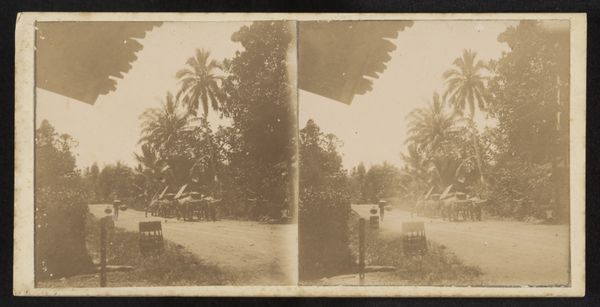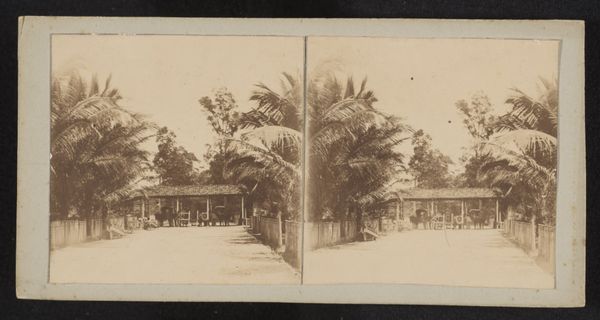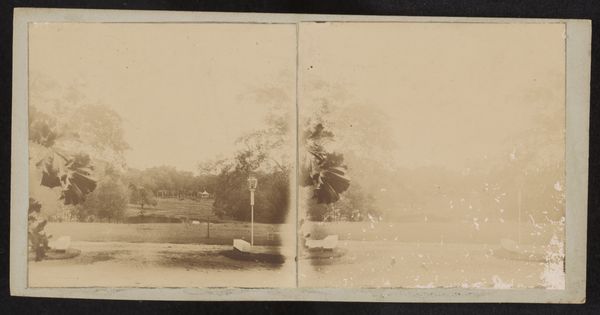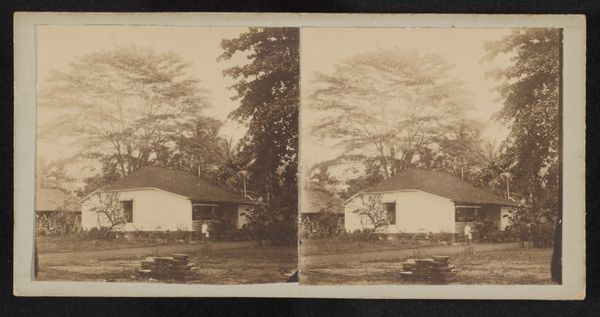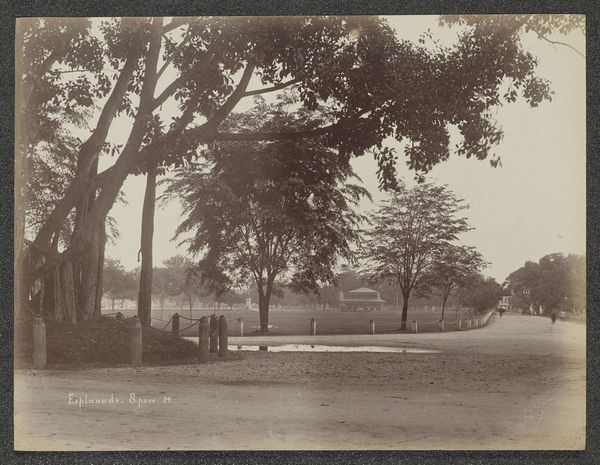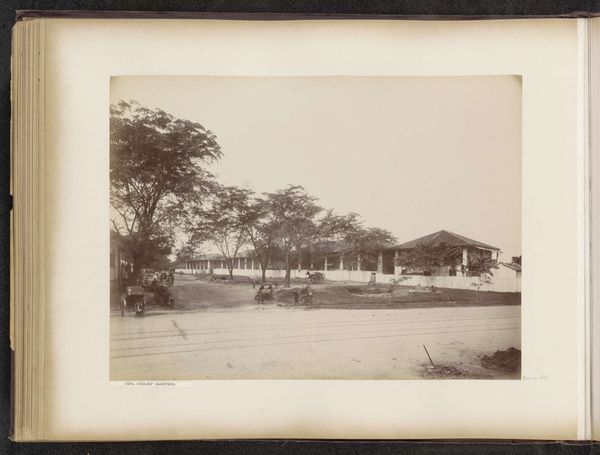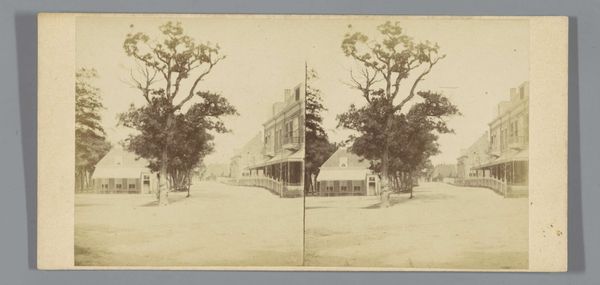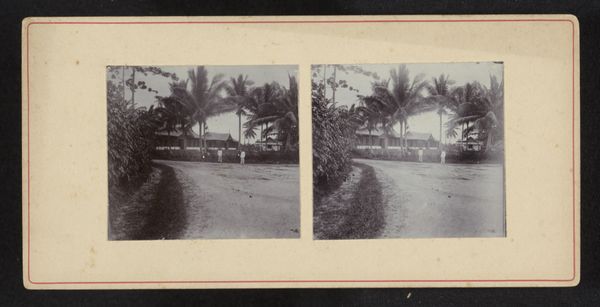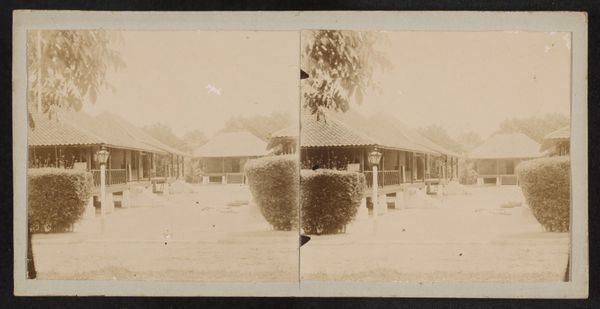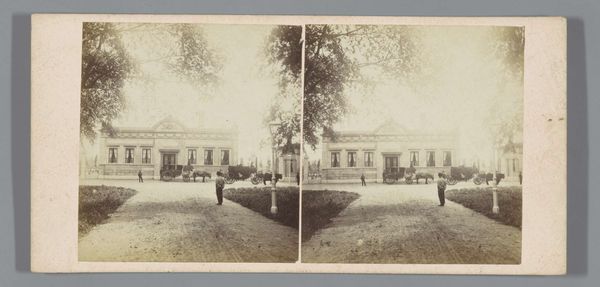
photography, gelatin-silver-print
#
landscape
#
photography
#
orientalism
#
gelatin-silver-print
Dimensions: height 72 mm, width 80 mm, height 88 mm, width 178 mm
Copyright: Rijks Museum: Open Domain
Curator: Before us is a gelatin silver print titled "Gevangenis te Soengeiliat," or "Prison in Soengeiliat," attributed to Robert Julius Boers, and likely taken sometime between 1900 and 1922. Editor: There’s something strangely serene about this scene for an image of a prison; the tropical vegetation, the light... Curator: Indeed. Boers was adept at manipulating light and shadow, observe the interplay between the stark white building and the lush foliage. He understood the power of contrast, it brings a certain drama, doesn't it? Editor: Absolutely. It's that contrast which grabs me; this image straddles Orientalist tropes—exotic landscape—and something darker: the colonial enterprise. This photograph, made in the Dutch East Indies, functions as documentation of imperial control. Curator: Notice how the architecture itself reinforces that sense of control through its rectilinear form, the horizontal emphasis implying the long-term subjugation. Editor: And yet the foliage encroaches—there’s an assertion of the landscape that refuses to be completely subdued. I find myself reading the shadows as indicators of hidden resistance. What message does this photograph try to communicate, what it really ends up communicates might be very different. Curator: A valid point. But do you see how Boers has precisely positioned the building slightly off-center to emphasize its dominance over the composition through this asymmetric balancing? A power dynamic, surely? Editor: The politics of space, yes. It forces a tension. This prison—the very idea of it— sits heavily in the scene. Curator: Thank you, it’s helpful to remember the layered implications of photographic images and to try decoding its form and symbolic charge to fully grasp its multiple interpretations. Editor: Likewise. It’s images such as this that invite critical examination and help unveil these colonial mechanisms which are crucial for today’s art historical discussions.
Comments
No comments
Be the first to comment and join the conversation on the ultimate creative platform.
